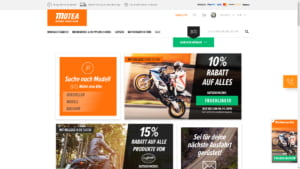Turning Big Data into signals for retail
More and more applications means more and more data. The challenge for retail companies: to gain business insights from supply chain data, online retail customer data, point-of-sale (POS) information, sales slip data and other sources without drowning in the flood of data.
Whether in store or online, retail requires meaningful strategies and practical solutions in order to profitably harness data from merchandise management, ERP, mailing, and CRM systems, Google Analytics, Amazon Advertising, etc. And an understanding that management decisions are not only increasingly data-driven, but also need to be made more quickly than ever before – including outside the office.
It is important to keep a cool head amidst the widespread hype around digitalization. Retailers should identify and adapt the digital trends that suit their own business.
When establishing a strategy, it is useful to look at companies that have already found the right dose of digitalization to help them to success.
Business Intelligence with DeltaMaster: Look, see, do!
What can in-store retail learn when it comes to the digitalization of e-commerce? Which digital strategies have proven successful for chains, and what should retailers look at in order to select the dose of digitalization that is right for them?
The future is digital – including for in-store retail. Effective digitalization is a question of the right dose. Our trend report shows how to achieve successful digital therapy without risks or side-effects. MediaMarkt, Popken Fashion, another fashion retailer, and a large German home decoration and furnishing specialist share their practical recommendations about all the good that digital can do. We give you five valuable tips for choosing the right dose of digitalization for your company.
Why should online retailers manage their business using more than just revenue and profit figures, and how can they keep track of procurement, inventories, margins, marketing, and returns without drowning in the flood of data?
You will soon be able to find out how online retailers keep track of things in the e-commerce trend report.
Can data navigation, variance analysis, and performance management also be performed on the move, and how important are the volume of data, the selection of KPIs, and visualization when it comes to ensuring effective data-driven company management by smartphone?
Digital transformation managers such as David have to question learned processes and detect trends in order to make the decisions that will shape change within the company. They are expected to deliver new impetus and ways of thinking that will help the company meet the challenges of the future.
David works with various departments. This means he is often on the road and requires a large number of different KPIs. They must be visualized in such a way as to allow him to see the most important information at a glance and identify where action needs to be taken.
We developed DeltaApp for people like David. It combines data navigation, variance analysis, and performance management in the most concise form imaginable. And it is operated with the thumb and in portrait mode, just like a smartphone usually is.
See and experience for yourself just how easy data-driven company management by smartphone can be. Request the “Digitalization in in-store retail” trend report and we will automatically send you a demo report for DeltaApp!
Discover how retail companies have found the dose of digitalization that is just right for them.

Media Markt Management AG Switzerland opened an online store in 2011. In doing so, it faced an important challenge: to analyze data from its internet business and combine it with the Group’s centralized management information system. In light of the expected volume of data, the management opted for a business intelligence solution. As well as the need for an open system, the key selection criteria included clear standards for report creation and the greatest possible degree of automation – all of which DeltaMaster was able to offer.
The omni-channel fashion company with the private labels Ulla Popken, GINA LAURA, JP1880, and STUDIO UNTOLD has a total of 600 branches as well as mail order and internet retail, meaning it needs a strong partner.
“We use DeltaMaster to explore data from all of the Group’s fashion labels, from a broad overview right down to the tiniest detail, including using the mobile web app,” Spekker concludes.


The online store Motea uses DeltaMaster as “software as a service” (SaaS) for tasks including detailed contribution margin accounting, inventory evaluation, days-of-inventory analysis, and individual analyses for supplier negotiations. The most important use for the BI solution is item pricing.